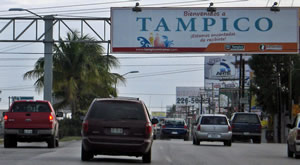Baja Peninsula's East Cape
- Last Updated: December 28, 2021 by Mike Mercer
- Categories:
- Baja, Destinations, Cabo
Mexico's Stunning East Cape
Where the Pacific Ocean and the Sea of Cortez meet, near the southernmost point of the Baja Peninsula, you will find Mexico's scenic East Cape. A number of vacation destinations dot the coastline around the southeast tip of the Mexican state of Baja California Sur, and the area has become a popular destination for travelers from all over the world. The East Cape is well known for its great weather, white sand beaches and colorful reefs. It is a popular destination for many different vacation activities, including: surfing, golfing, and fabulous world class sport-fishing. And, it is also a great place to go, for those who are into watching whales, sea turtles, sea lions or sharks.
History of the Baja Peninsula
The earliest known inhabitants to the region were the aboriginal Pericú people, who harvested their food from both the bountiful ocean and from the land. However, European disease and ongoing war against the Spaniards nearly brought the tribe to the point of total extinction. The Baja California peninsula was once thought to be an island, and most world maps depicted the area as such, well into the 18th century. Oddly, this misconception continued for hundreds of years, even after Hernán Cortés sent his navigator, Francisco de Ulloa, northward on an expedition to explore the coast of the Gulf of California, and ultimately reach the mouth of the Colorado River, dispelling the island myth, in 1539. Many English, French and Dutch pirates also frequented the area, looting Spanish galleons for hundreds of years.
Los Cabos
Cabo San Lucas and San Jose del Cabo are often referred to as Los Cabos, and are home to large ex-pat communities. Cabo San Lucas has repeatedly been rated in the top ten best tourist destinations in all of Mexico. San Jose del Cabo grew up around the Misión de San José del Cabo Añuití, which was founded in 1730 by the Jesuit missionary, Javier Nicolás Tamaral. Cabo San Lucas, and San Jose del Cabo are connected by an 18 mile stretch of area known as the tourist corridor. The Los Cabos area is becoming increasingly well-known for its many lavish tourist resorts, vacation spas, and championship world-class golf courses.
Buena Vista and Los Barriles
Farther to the north, you'll find the two seaside communities of Buena Vista and Los Barriles. Los Barriles (The Barrels), located on the Bahia Las Palmas received its name because of a local legend, claiming that pirates, in efforts to protect their plundered treasure from being captured by the Spanish, had buried a number of barrels filled with gold, silver, and jewels, somewhere in the vicinity of this little town. Legend has it that the treasure is still buried there at a yet undiscovered location. Buena Vista and Los Barriles offer a more laid back and leisurely environment, compared to the much busier Los Cabos area.
Getting to Mexico's East Cape by car
Mexican Federal Highway 1, also known as the Transpeninsular Highway, runs all the way from Tijuana, at the U.S./Mexico border, to Cabo San Lucas, at the southernmost tip of the Baja peninsula. This roadway was constructed in 1973 with the aim of developing interstate trade between the states of Baja California and Baja California Sur. Much of the road has just two lanes and there are several stretches that will require you to pay tolls. The journey of just over a thousand miles typically requires about 19 hours of driving time, but may take longer if you should encounter any construction zones, as Mexico is continually working to replace the worn-out sections of the highway.
East Cape inside the Hassle Free Zone
Mexico's entire Baja peninsula is located within the "Hassle Free Zone," so Temporary Vehicle Importation Permit Stickers are not required. Mexico established its free zone in efforts to encourage tourism and foster greater economic growth. Within the free zone, customs importation requirements are either reduced or removed, allowing many goods to be imported into the country duty free. Even if you will be travelling exclusively within the free zone, you will still need to secure Mexican insurance for your vehicle. The Mexican government does not recognize liability coverage that is provided by any U.S. insurer, but instead requires that liability coverage be purchased from a recognized Mexican insurance company. You can easily get comparative online quotes for Mexico tourist auto insurance, and even purchase a policy, in just a matter of minutes, by visiting the Mexico insurance professional website at www.Mexpro.com.
